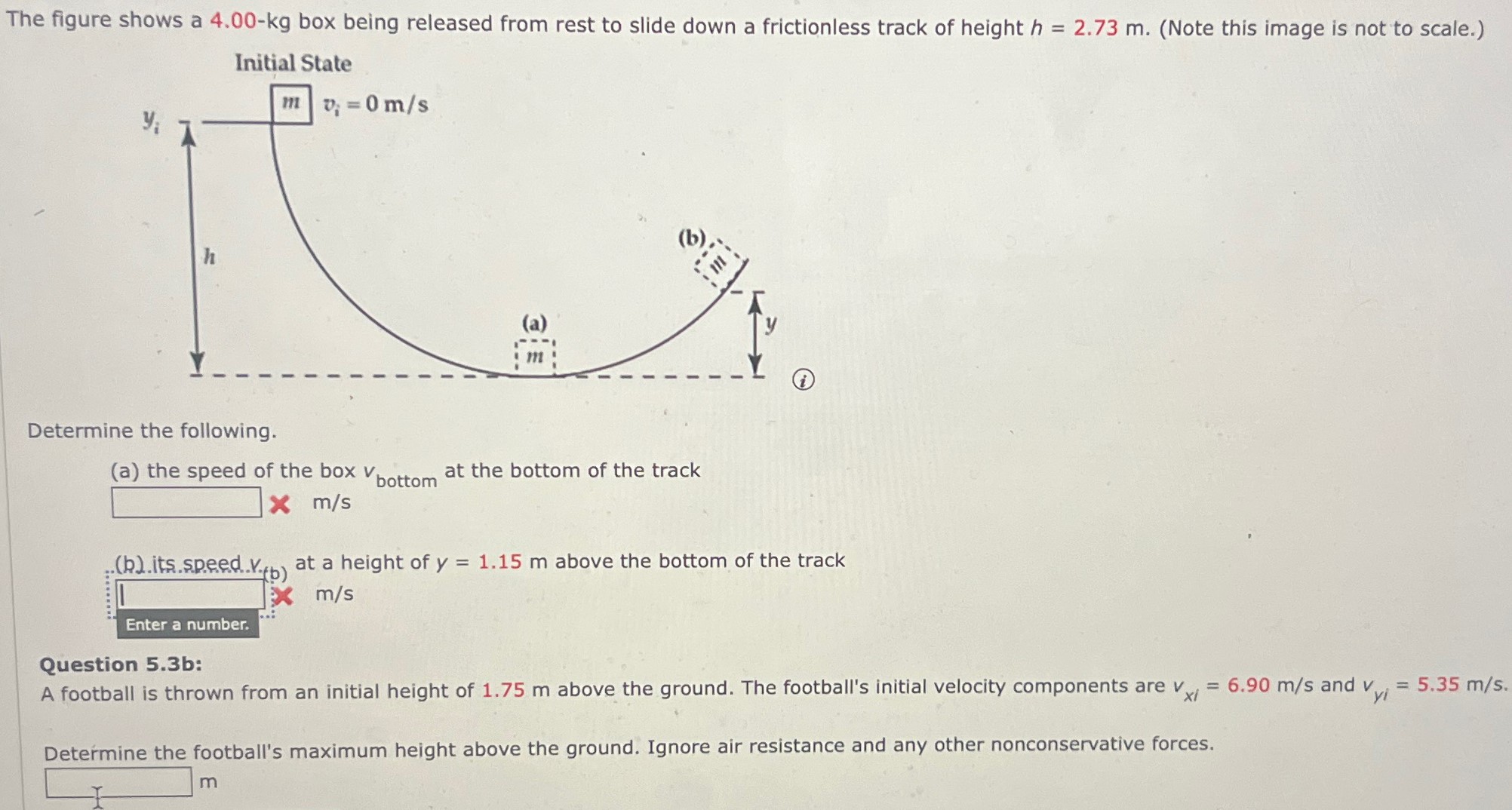The figure shows a 4.00-kg box being released from rest to slide down a frictionless track of height h = 2.73 m. (Note this image is not to scale. ) Determine the following. (a) the speed of the box vbottom at the bottom of the track m/s (b). its. speed v at a height of y = 1.15 m above the bottom of the track m/s. Question 5.3 b: A football is thrown from an initial height of 1.75 m above the ground. The football's initial velocity components are vxi = 6.90 m/s and vyi = 5.35 m/s. Determine the football's maximum height above the ground. Ignore air resistance and any other nonconservative forces. m
